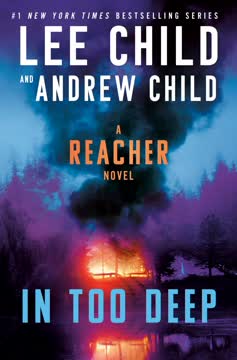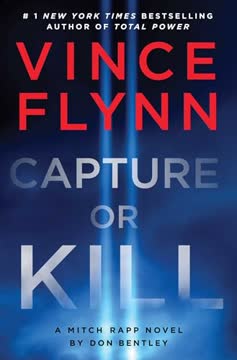Plot Summary
Surf, Theft, and Loss
Renée Ballard, a dedicated LAPD detective, begins her day surfing, savoring the peace before work. But her tranquility is shattered when she discovers her car has been burglarized—her badge, gun, phone, and wallet stolen. This violation is more than personal; it threatens her career and sense of security. Ballard's frustration is compounded by the knowledge that such thefts are common at surf spots, often overlooked by law enforcement. She quickly deduces that the thieves are likely surfers themselves, using wave apps to target victims. The loss of her badge and gun is a professional crisis, forcing her to investigate off the books, risking her position and reputation.
Cold Cases, New Team
Ballard leads the LAPD's Open-Unsolved Unit, a team of retired detectives, civilian experts, and volunteers, each bringing unique skills to the table. The unit's mission is to clear cold cases, especially those with new forensic leads. The team includes genetic genealogists, tech-savvy researchers, and seasoned investigators. Their work is a drop in the bucket compared to the thousands of unsolved murders in Los Angeles, but each solved case brings closure to families and a sense of purpose to the team. Ballard's leadership is tested as she balances the personalities and ambitions of her diverse squad, all while dealing with the fallout from her own theft.
Patterns in the Waves
Ballard's investigation into her own theft uncovers a pattern: a string of burglaries at surf spots, all coinciding with the best wave conditions as predicted by popular apps. She realizes the thieves are using technology to select their targets, exploiting the isolation of surfers from their vehicles. By cross-referencing police reports and app data, Ballard identifies likely suspects and begins surveillance, determined to recover her badge and gun without alerting her superiors. This personal quest runs parallel to the unit's official work, blurring the lines between Ballard's professional and private lives.
The Pillowcase Rapist Returns
A breakthrough comes when a familial DNA search links a recent domestic violence arrestee to the infamous Pillowcase Rapist, a serial offender who terrorized Los Angeles decades earlier. The rapist's signature was chilling: attacking women in their homes, covering their heads with pillowcases, and leaving few clues. The DNA match points to the son of the rapist, but the father's identity remains elusive. The case becomes personal for Ballard, who was a rookie cop during the original investigation. The team races to confirm the suspect's identity, knowing the implications for justice and the victims' families.
DNA, Family, and Judges
The DNA trail leads to a shocking suspect: Judge Jonathan Purcell, the presiding judge of the Los Angeles Superior Court. Surveillance and surreptitious DNA collection ensue, but the results are confounding—Purcell is not the biological father. The investigation uncovers a hidden adoption, a teenage mother's suicide, and a web of secrets involving privilege, shame, and the lengths people go to protect reputations. The real rapist remains at large, and the team must dig deeper into the past, tracing classmates and connections from a 1999 high school prom that may hold the key to the case.
Therapy and Trauma
Ballard's sessions with her therapist, Dr. Elingburg, reveal the toll her work takes on her psyche. Haunted by her mother's abandonment and the vicarious trauma of dealing with victims' families, Ballard struggles with insomnia and self-doubt. The theft of her badge and gun becomes a metaphor for her vulnerability. Therapy sessions explore themes of guilt, resilience, and the search for closure—not just for the cases she works, but for her own life. The water remains her sanctuary, but even that is threatened by the chaos of her job.
Surveillance and DNA Hunt
The team orchestrates a high-stakes surveillance to obtain DNA from the judge, leading to tense encounters and ethical dilemmas. Meanwhile, Ballard's pursuit of her stolen badge takes her into the criminal underworld, where she confronts fences and small-time crooks. A sting operation to recover her badge and gun uncovers a larger plot involving domestic terrorists planning a mass shooting. Ballard and her mentor, Harry Bosch, go undercover, risking their lives to prevent tragedy. The lines between personal and professional missions blur as the stakes escalate.
The Judge's Secret
Interviews with Judge Purcell and the family of the teenage mother reveal a tragic story of hidden parentage, societal pressure, and unresolved trauma. The adopted son, once thought to be the key to the Pillowcase Rapist, is instead a victim of circumstance. The investigation shifts focus to the group of high school boys who had access to the vulnerable mother during a fateful prom night. The team must navigate decades-old secrets, faded memories, and the reluctance of witnesses to revisit painful events.
The Undercover Sting
Ballard's quest to recover her badge leads to the discovery of a domestic terror cell plotting an attack on the Malibu pier. With the help of Bosch and the FBI, she sets up a sting operation, posing as an arms dealer to lure the suspects. The operation is fraught with danger, culminating in a violent confrontation that averts disaster but leaves Ballard's role under scrutiny. The badge is recovered, but not without cost—her actions draw the attention of internal affairs and threaten her position.
The Black Dahlia Files
A chance discovery by Maddie Bosch, Harry's daughter and a new team member, brings fresh evidence in the Black Dahlia case. Photos and files from a deceased photographer's storage unit suggest he was the killer of Elizabeth Short and other women. The team meticulously reconstructs the crimes, using modern forensic techniques and genetic genealogy to identify victims and link them to the suspect. The case becomes a test of the unit's capabilities and the limits of justice when the district attorney refuses to officially close the case, citing insufficient evidence.
Unsolved Women, Unfinished Justice
The team's work on the Black Dahlia and other cold cases highlights the systemic failures that allowed so many women's murders to go unsolved. Racial and class biases, bureaucratic inertia, and political infighting all play roles in denying closure to victims' families. The volunteers' dedication is contrasted with the indifference of those in power. The emotional toll is immense, especially when one of their own, Colleen Hatteras, is murdered while pursuing a lead. Her death is a devastating blow, forcing the team to confront the risks and responsibilities of their work.
The Team's Sacrifice
Colleen's murder shakes the unit to its core. Ballard is wracked with guilt, questioning her leadership and the wisdom of using volunteers in dangerous investigations. The team rallies to solve Colleen's murder, uncovering that the Pillowcase Rapist—Andrew Bennett, a seemingly successful real estate agent—killed her to protect his secret. The case is cracked through a combination of forensic evidence, dogged detective work, and the ultimate sacrifice of a team member. The victory is bittersweet, as the cost of justice is made painfully clear.
The Final Confrontation
Ballard confronts Bennett, arresting him in a tense showdown that brings closure to the Pillowcase Rapist case and justice for Colleen. The media and department leadership seize on the victory, but the celebration is muted by the loss and the knowledge that many cases remain unsolved. The Black Dahlia case, despite overwhelming evidence, is left officially open due to political machinations. Ballard and her team are left to grapple with the realities of a system that often values appearances over truth.
Aftermath and Answers
In the aftermath, Ballard navigates departmental politics, ensuring Maddie Bosch remains on the team and that the unit survives scrutiny. The media exposes the district attorney's refusal to close the Black Dahlia case, sparking public outrage and calls for reform. Ballard finally receives word that her long-missing mother is alive, prompting a journey to Hawaii for a possible reconciliation. The personal and professional threads of her life intertwine, underscoring the ongoing nature of waiting—for justice, for answers, for peace.
The Waiting Never Ends
The novel closes with Ballard reflecting on the nature of waiting—waiting for waves, for justice, for closure, for healing. The cases may be solved or left open, but the emotional aftermath lingers. The team's work is never truly done, as new cases emerge and old wounds remain. Ballard's journey is one of resilience in the face of uncertainty, finding meaning in the pursuit itself, even when the waiting is the hardest part.
Characters
Renée Ballard
Ballard is the heart of the Open-Unsolved Unit, driven by a deep sense of justice and personal loss. Her childhood abandonment by her mother and the trauma of her father's death shape her worldview, fueling her empathy for victims and her distrust of authority. Ballard's leadership is both a strength and a burden; she is fiercely protective of her team but struggles with guilt when things go wrong. Her coping mechanisms—surfing, therapy, and work—are both salvation and escape. Ballard's development is marked by increasing self-awareness, as she confronts her own vulnerabilities and the limits of what she can control.
Colleen Hatteras
A civilian volunteer and genetic genealogy expert, Colleen is relentless in her pursuit of answers for victims. Her personal life—recent divorce, empty nest—drives her to pour herself into the unit's work. Colleen's boundary-crossing curiosity and emotional intensity make her both invaluable and difficult. Her murder is a turning point, exposing the dangers faced by those who seek justice and the emotional cost of the work. Colleen's legacy is the inspiration she provides to the team, even as her death haunts them.
Maddie Bosch
The daughter of legendary detective Harry Bosch, Maddie is a young officer seeking to prove herself. Her intelligence and intuition quickly make her an asset to the unit, especially in the Black Dahlia case. Maddie's struggle is to balance her ambition with the emotional realities of police work, learning from both her father's example and Ballard's mentorship. Her involvement in high-profile cases tests her resilience and shapes her emerging identity as a detective.
Harry Bosch
A retired detective battling cancer, Bosch remains a guiding force for Ballard and Maddie. His experience, moral clarity, and willingness to bend rules for justice make him both a role model and a cautionary tale. Bosch's involvement in the undercover sting and his support for Ballard during crises underscore his enduring commitment to the job and those he cares about. His presence is a reminder of the personal sacrifices required in the pursuit of truth.
Andrew Bennett
Bennett is the Pillowcase Rapist, a man who hides his predatory nature behind a veneer of success and normalcy. His ability to manipulate and evade detection for decades speaks to both his cunning and the failures of the system. Bennett's eventual unmasking is the result of collective effort, forensic advances, and the courage of those who refuse to let the past remain buried. His character embodies the banality of evil and the dangers lurking beneath the surface of ordinary life.
Judge Jonathan Purcell
Purcell's involvement in the case is a study in privilege, secrecy, and the unintended consequences of trying to protect family reputation. His adoption of a child under questionable circumstances and the subsequent unraveling of the truth highlight the complexities of justice and the personal costs of hidden shame. Purcell's cooperation, once confronted, is motivated by a desire to shield his son from stigma, revealing the human side of those caught in the web of the law.
Anders Persson
A Swedish software expert and volunteer, Anders is instrumental in the unit's digital investigations. His friendship with Colleen and willingness to bend rules for the greater good make him a valuable, if sometimes ethically ambiguous, team member. Anders represents the new face of detective work, where technology and traditional methods intersect.
Paul Masser
A former prosecutor, Masser brings legal expertise and a calm, rational presence to the team. His understanding of the law's nuances and his ability to connect with victims' families make him a bridge between the investigative and prosecutorial worlds. Masser's development is marked by his growing investment in the team's mission and his willingness to take risks for justice.
Tom Laffont
A retired FBI agent, Laffont is motivated by a desire to right past wrongs, especially in cases involving marginalized victims. His commitment to balancing the scales of justice and his willingness to mentor younger team members make him a stabilizing force. Laffont's character explores themes of redemption and the ongoing impact of unsolved crimes.
The Black Dahlia (Elizabeth Short)
Though a victim from the distant past, Elizabeth Short's case looms large over the narrative, representing the enduring allure and frustration of unsolved mysteries. Her story is a touchstone for the team's work, embodying the pain of waiting for answers and the societal failures that allow such cases to remain open. The pursuit of her killer becomes a metaphor for the broader quest for justice.
Plot Devices
Dual Narrative Threads
The novel weaves together Ballard's personal quest to recover her stolen badge and gun with the unit's official investigations into cold cases, especially the Pillowcase Rapist and Black Dahlia. This structure allows for thematic exploration of vulnerability, justice, and the blurred boundaries between detective and victim. The convergence of these threads in high-stakes operations and emotional reckonings heightens tension and deepens character development.
Familial DNA and Genetic Genealogy
The use of familial DNA searches and genetic genealogy is central to solving both the Pillowcase Rapist and Black Dahlia cases. These techniques highlight the advances in forensic science and the ethical dilemmas they pose, especially regarding privacy, consent, and the potential for uncovering hidden family histories. The plot device serves as both a tool for justice and a catalyst for personal and institutional conflict.
Undercover Operations and Surveillance
Sting operations, surveillance, and undercover work drive much of the action, from Ballard's pursuit of her badge to the prevention of a mass shooting. These devices create suspense and allow for exploration of trust, deception, and the dangers inherent in police work. The narrative structure often employs foreshadowing, with early hints of danger paying off in climactic confrontations.
Thematic Echoes and Symbolism
Surfing serves as a recurring motif, symbolizing both escape and the unpredictable nature of life and justice. The theme of waiting—whether for waves, answers, or closure—permeates the narrative, underscoring the emotional toll of unresolved cases. Therapy sessions and personal reflections provide psychological depth, connecting individual trauma to broader societal issues.
Institutional Critique and Political Intrigue
The novel critiques the limitations of the justice system, from bureaucratic inertia to political infighting between the police and district attorney. The refusal to close the Black Dahlia case, despite overwhelming evidence, exemplifies how personal ambition and institutional priorities can override truth. The plot device of media leaks and public pressure serves to challenge and sometimes circumvent official channels.
Analysis
Michael Connelly's The Waiting is a masterful exploration of the intersection between personal trauma and the pursuit of justice, set against the backdrop of Los Angeles's unsolved crimes. Through the lens of Renée Ballard and her diverse team, the novel interrogates the emotional and ethical complexities of cold case investigations, the impact of new forensic technologies, and the enduring pain of waiting for answers. The narrative's dual threads—Ballard's personal quest and the team's professional mission—underscore the porous boundaries between detective and victim, past and present. The novel is unflinching in its portrayal of institutional failures, the cost of justice, and the sacrifices required of those who seek it. Ultimately, The Waiting is a meditation on resilience, the necessity of hope, and the understanding that closure is often elusive, but the pursuit itself is an act of meaning and defiance against the darkness.
Last updated:
FAQ
Synopsis & Basic Details
What is The Waiting about?
- Personal Quest Ignites Investigation: The Waiting follows LAPD Detective Renée Ballard, whose morning surf is interrupted by the theft of her badge, gun, phone, and wallet. This personal violation propels her into an off-the-books investigation, risking her career to recover her stolen property.
- Cold Cases Intertwine: Simultaneously, Ballard leads the Open-Unsolved Unit, a team of dedicated volunteers and experts, as they pursue a familial DNA lead in the decades-old Pillowcase Rapist case, a notorious serial predator who terrorized Los Angeles.
- Secrets and Justice Unravel: The narrative weaves these threads together, uncovering a complex web of hidden adoptions, political machinations, and a shocking discovery related to the infamous Black Dahlia murder, all while Ballard grapples with her own past trauma and the elusive nature of justice.
Why should I read The Waiting?
- Deep Psychological Exploration: Readers seeking a crime novel that delves into the psychological toll of police work and personal trauma will find Ballard's journey compelling, especially her sessions with Dr. Elingburg and her struggle with abandonment issues. The novel offers a nuanced look at how past wounds shape a detective's relentless pursuit of justice.
- Intricate, Multi-Layered Plot: Michael Connelly masterfully crafts a complex narrative where seemingly disparate cases—a stolen badge, a cold serial rape/murder, and the Black Dahlia—converge, revealing unexpected connections and high-stakes confrontations that keep readers guessing until the very end.
- Timely Social Commentary: Beyond the thrilling plot, the book offers sharp commentary on contemporary issues, including the rise of domestic extremism, the challenges of homelessness, and the pervasive political infighting that often obstructs justice, making it a thought-provoking read for those interested in the societal backdrop of crime.
What is the background of The Waiting?
- Post-Pandemic Social Landscape: The novel subtly reflects a post-COVID world, referencing the "twin ideological earthquakes of the COVID pandemic and the failed insurrection at the U.S. Capitol" (Chapter 15) as factors contributing to the rise of anti-government extremist groups like the "sovereign citizens" encountered by Ballard and Bosch.
- Technological Advancements in Policing: Modern forensic science, particularly familial DNA and genetic genealogy, is central to the cold case investigations, showcasing how technology can unlock decades-old secrets. The use of surf apps by criminals also highlights the double-edged sword of digital tools in contemporary crime.
- Political and Bureaucratic Obstacles: The narrative is steeped in the political realities of the LAPD and the District Attorney's office, illustrating how inter-departmental rivalries and personal ambitions (e.g., Chief Detry vs. DA O'Fallon) can impede the pursuit of justice, especially in high-profile cases like the Black Dahlia.
What are the most memorable quotes in The Waiting?
- "The waiting is the hardest part.": This recurring phrase, attributed to a Tom Petty song (Chapter 25), encapsulates the core theme of the novel, reflecting the prolonged emotional toll on victims' families, detectives, and even Ballard herself as she waits for answers, justice, and personal closure.
- "Dig Down.": Ballard's personal mantra, taken from a Muse song and displayed on a sign in her pod (Chapter 3), symbolizes her relentless determination in both life and investigations, urging her and her team to delve deeper into cases and confront difficult truths.
- "The dead teach the living.": This motto of the California Homicide Investigators Association (Chapter 32), shared by Ballard, underscores the profound responsibility detectives feel towards cold case victims, emphasizing that their stories, even decades later, can still illuminate the path to justice and prevent future crimes.
What writing style, narrative choices, and literary techniques does Michael Connelly use?
- Immersive First-Person Perspective: Connelly primarily employs a close first-person perspective through Renée Ballard, allowing readers deep access to her internal monologues, emotional struggles, and strategic thinking, creating a strong sense of empathy and immediacy. This contrasts with the more detached third-person often used in other Connelly series.
- Propulsive Pacing and Interweaving Plots: The narrative maintains a relentless pace, skillfully interweaving multiple complex investigations—Ballard's personal quest, the Pillowcase Rapist, and the Black Dahlia—each building tension and revealing unexpected connections, ensuring constant engagement and a sense of urgency.
- Symbolic Environmental Descriptions: Connelly uses vivid descriptions of the Los Angeles landscape, particularly the ocean and urban decay, to mirror Ballard's internal state and thematic elements. The contrast between the "reverence" of waiting for a wave (Chapter 1) and the "chaos" of the city (Chapter 16) reflects Ballard's search for peace amidst turmoil.
Hidden Details & Subtle Connections
What are some minor details that add significant meaning?
- The Missing Ruger Boot Gun: The thief's oversight in missing Ballard's seven-shot Ruger boot gun (Chapter 1) is a crucial detail, providing her with a concealed weapon that proves vital in her off-the-books pursuit of the thieves and later in her confrontation with Andrew Bennett, highlighting her preparedness and resourcefulness.
- Breitling Watch Inscription: The specific inscription "To Seth from Dad 12-25-21" on the stolen Breitling watch (Chapter 11) adds a layer of emotional weight to Ballard's personal quest. Its recovery and return to Seth Dawson (Chapter 38) underscore Ballard's deep empathy for victims and her commitment to restoring what was lost, even beyond her own badge.
- "Anal Road Warrior" Joke: Ballard's internal joke about the "Anal Road Warrior" (Chapter 16) while tailing Dehaven's RV, a game she played with her grandmother, is a subtle callback to her past and her relationship with Tutu, momentarily humanizing her in a tense situation and hinting at her coping mechanisms.
What are some subtle foreshadowing and callbacks?
- Colleen's Genetic Tree Discrepancy: Colleen Hatteras's early observation that the "genetic tree" for Nicholas Purcell "didn't connect in any way to the judge" (Chapter 9) subtly foreshadows the eventual revelation that Judge Purcell is not the biological father, setting up the major plot twist and the subsequent shift in the Pillowcase Rapist investigation.
- Ballard's "Short Temper" Warnings: Dr. Elingburg's repeated observations about Ballard's "short temper" (Chapter 36) and her tendency to "overreact" (Chapter 36) subtly foreshadow Ballard's aggressive confrontation with Agent Olmstead and her later, more controlled, but still intense, interactions with Captain Gandle, highlighting her ongoing struggle with emotional regulation.
- The "Road Warrior" RV: The initial mention of the "Road Warrior" RV (Chapter 16) as part of the caravan of extremists subtly foreshadows the later discovery of the LAPD SWAT vest and arsenal within Dehaven's van, hinting at the organized and dangerous nature of the group beyond simple "sovereign citizen" posturing.
What are some unexpected character connections?
- Delsey Father-Son Parallel: The Delsey father-son duo, Dean and Robert, who steal Ballard's badge, unexpectedly mirror the Purcell father-son dynamic. Both involve a son whose actions (Dean's petty theft, Nicholas's domestic violence arrest) inadvertently expose a deeper, more significant criminal or secret involving their father, highlighting a recurring pattern of generational consequence.
- Maddie's Black Dahlia Fascination: Maddie Bosch's deep fascination with the Black Dahlia case, stemming from her father Harry's own interest (Chapter 20), creates an unexpected intergenerational connection to one of L.A.'s most enduring mysteries. This shared interest not only drives Maddie's discovery but also subtly links her to Harry's legacy of pursuing justice for the forgotten.
- Ballard's Maui Contact and Mother: The seemingly minor character of Dan Farley, Ballard's contact on the Maui fire task force (Chapter 5), becomes a pivotal connection in her personal life. His eventual call confirming her mother is alive (Chapter 50) transforms a background detail into a deeply personal and unexpected turning point for Ballard, linking her professional world to her unresolved family trauma.
Who are the most significant supporting characters?
- Dr. Cathy Elingburg: Ballard's therapist, Dr. Elingburg, serves as a crucial sounding board, guiding Ballard through her "vicarious trauma" and "abandonment resentment" (Chapter 35). Her insights provide a psychological framework for Ballard's motivations and emotional complexities, offering a rare glimpse into the detective's inner world and personal growth.
- Dan Farley: The Maui MINT contact, Dan Farley, plays a vital role in Ballard's personal narrative, acting as her sole link to her missing mother. His consistent updates and eventual notification that Makani Ballard is alive (Chapter 50) provide a powerful emotional arc, culminating in Ballard's journey to Maui for a potential reconciliation.
- Mr. Waxman: The manager of Echo Park Storage, Mr. Waxman, is the catalyst for the Black Dahlia breakthrough. His decision to show Maddie Bosch the disturbing contents of Emmitt Thawyer's unit (Chapter 21) directly leads to the reopening of L.A.'s most famous cold case, demonstrating how seemingly minor characters can trigger major plot developments.
Psychological, Emotional, & Relational Analysis
What are some unspoken motivations of the characters?
- Ballard's Control Over Chaos: Renée Ballard's relentless pursuit of her stolen badge and gun, even off-the-books, is driven by an unspoken need to regain control in her life, stemming from her childhood abandonment. The theft represents a loss of control, and her aggressive recovery mission is a way to reassert agency in a world she perceives as chaotic and unpredictable.
- Colleen's Search for Purpose: Colleen Hatteras's obsessive dedication to cold cases, working far beyond her volunteer hours, is an unspoken coping mechanism for her recent divorce and empty nest. Her "relentless at the keyboard" (Chapter 3) nature fills a void, providing her with a sense of purpose and belonging that her personal life currently lacks.
- Judge Purcell's Reputation Protection: Judge Jonathan Purcell's initial reluctance to cooperate and his eventual confession about Nicholas's adoption are motivated by an unspoken desire to protect his family's reputation and his son from the stigma of his biological father's crimes. His actions highlight the lengths to which powerful individuals will go to maintain appearances and shield loved ones from scandal.
What psychological complexities do the characters exhibit?
- Ballard's Abandonment Resentment: Ballard grapples with profound "abandonment resentment" (Chapter 35) towards her mother, which Dr. Elingburg identifies as a core cause of her insomnia and agitation. This complexity is evident in Ballard's internal conflict about seeking her mother, feeling "guilty as hell" (Chapter 35) for not going, yet unable to move past the hurt of being left behind.
- Harry Bosch's Vicarious Protection: Harry Bosch exhibits a complex protective instinct towards Maddie, warning Ballard about the "darkness" (Chapter 11) of police work. This stems from his own career's psychological toll and his desire to shield his daughter from similar trauma, even as he supports her ambition to become a detective.
- Andrew Bennett's Psychopathic Facade: Andrew Bennett, the Pillowcase Rapist, displays classic psychopathic traits, maintaining a charming and successful real estate agent persona while committing horrific crimes. His "flat, dead eyes" (Chapter 55) and lack of empathy, even when confronted, reveal a chilling psychological complexity that allows him to compartmentalize his violent urges from his public life.
What are the major emotional turning points?
- Discovery of Colleen's Murder: The most significant emotional turning point is Ballard's discovery of Colleen Hatteras's murdered body (Chapter 51). This event plunges Ballard into a deep sense of guilt and personal responsibility, transforming the Pillowcase Rapist case from a professional pursuit into a deeply personal mission for vengeance and justice for her fallen colleague.
- Black Dahlia Case Rejection: The district attorney's political rejection of the Black Dahlia case (Chapter 45), despite overwhelming evidence, is an emotional low point for Ballard and Maddie. It highlights the frustrating reality of institutional politics overriding justice, leaving victims' families without official closure and fueling Ballard's cynicism about the system.
- News of Makani Ballard's Survival: Dan Farley's call informing Ballard that her mother, Makani, is alive (Chapter 50) is a profound emotional turning point. It shatters Ballard's long-held assumptions and forces her to confront the possibility of reconciliation or further pain, setting the stage for her personal journey to Maui.
How do relationship dynamics evolve?
- Ballard and Bosch: Co-Conspirators: The relationship between Ballard and Harry Bosch evolves from mentor-mentee to one of deep trust and co-conspiracy. Their collaboration on the Dehaven sting, where Bosch acts as a "tethered goat" (Chapter 28), demonstrates a profound mutual reliance and willingness to bend rules for justice, solidifying their bond beyond professional boundaries.
- Ballard and Colleen: Guilt and Regret: Ballard's relationship with Colleen Hatteras, initially marked by annoyance over Colleen's boundary-crossing, transforms into profound guilt and regret after Colleen's murder. Ballard's self-blame for not adequately protecting her volunteer (Chapter 52) underscores the heavy emotional cost of leadership and the dangers inherent in their work.
- Ballard and Maddie: Mentorship to Partnership: Maddie Bosch's role evolves from an eager volunteer to a respected partner. Ballard's initial skepticism gives way to admiration for Maddie's sharp investigative instincts, particularly in the Black Dahlia case. This culminates in Ballard's strategic efforts to protect Maddie's position on the unit, demonstrating a deep commitment to her development and future.
Interpretation & Debate
Which parts of the story remain ambiguous or open-ended?
- Ballard's Mother's Fate: The novel concludes with Ballard traveling to Maui to meet her mother, Makani, but the outcome of this reunion remains ambiguous. Readers are left to ponder whether it will lead to reconciliation, further pain, or a new understanding of her past, leaving a significant personal arc unresolved.
- Long-Term Impact of Black Dahlia Rejection: Despite compelling evidence, the Black Dahlia case is officially rejected by the DA, leaving its status as "solved" in the public eye but "unclosed" by the justice system. The long-term implications of this political decision on the victims' families and the LAPD's reputation remain open to interpretation.
- Future of the Open-Unsolved Unit: Colleen Hatteras's murder and the subsequent internal scrutiny of the Open-Unsolved Unit leave its future uncertain. While Maddie Bosch's position is secured, the broader question of whether the department will continue to utilize civilian volunteers in cold cases, given the inherent risks, remains an open question.
What are some debatable, controversial scenes or moments in The Waiting?
- Ballard's Off-the-Books Investigation: Ballard's decision to pursue her stolen badge and gun "off the books" (Chapter 1), rather than reporting it, is highly debatable. This choice, driven by fear of career repercussions, leads her to cross ethical lines and engage in unauthorized surveillance and confrontations, raising questions about police accountability and the integrity of her actions.
- Harry Bosch as a "Tethered Goat": The FBI's use of Harry Bosch as a "tethered goat" (Chapter 28) in the sting operation to capture Thomas Dehaven is a controversial tactic. This high-risk strategy, which puts Bosch's life in direct danger, sparks a heated debate between Ballard and Agent Olmstead about the value of human life versus the strategic capture of multiple suspects.
- DA O'Fallon's Political Rejection: District Attorney Ernest O'Fallon's repeated rejection of the Black Dahlia case (Chapter 45), despite strong forensic evidence, is a highly controversial moment. His decision, explicitly linked to political rivalry with Chief Detry, highlights the corrupting influence of politics on justice and sparks outrage from both the police and the public.
The Waiting Ending Explained: How It Ends & What It Means
- Personal Journey to Confrontation: The novel concludes with Renée Ballard flying to Maui, preparing to confront her long-missing mother, Makani, who has been located alive after the wildfires. This signifies Ballard's readiness to finally address her deep-seated abandonment issues and seek personal closure, moving beyond her professional identity to heal old wounds.
- Political Victory for Maddie Bosch: The Black Dahlia case, though officially rejected by the DA, is leaked to the L.A. Times, prominently crediting Maddie Bosch for the breakthrough. This public relations coup forces Captain Gandle to rescind his order to remove Maddie from the unit, securing her position and highlighting the power of media in circumventing political obstruction.
- The Enduring Cycle of "The Waiting": The title's theme, "The Waiting," resonates throughout the ending. While the Pillowcase Rapist is caught and Ballard's badge is recovered, the Black Dahlia case remains officially open, and Ballard's personal quest for reconciliation with her mother is just beginning. This emphasizes that the pursuit of justice and personal peace is an ongoing, often cyclical, process, where answers bring new questions and closure is often elusive.
Review Summary
The Waiting receives mostly positive reviews, with readers praising Connelly's storytelling and character development. Many appreciate the focus on Renée Ballard and Maddie Bosch, though some miss Harry Bosch's prominence. The book's multiple plotlines are generally well-received, but a few readers find them disconnected. Critics note political undertones and question some character decisions. Overall, fans of the series enjoy the continuation of the Bosch universe, while newcomers may struggle with the complexity of ongoing storylines.
Harry Bosch Universe Series
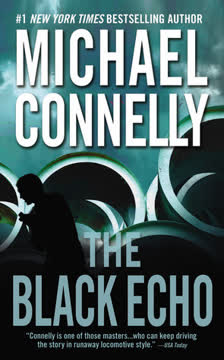
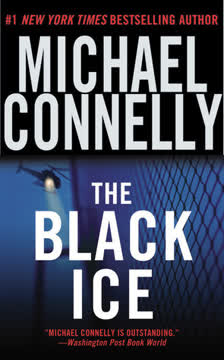



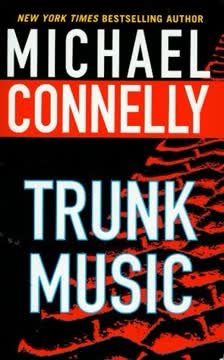
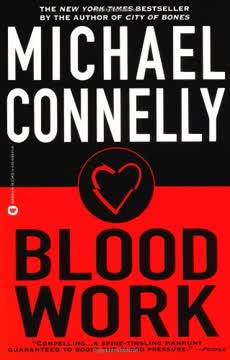
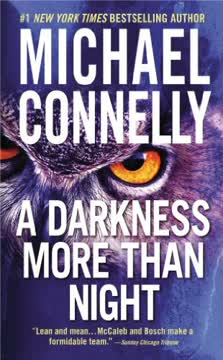
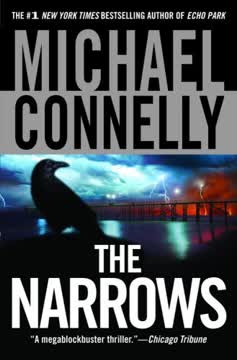
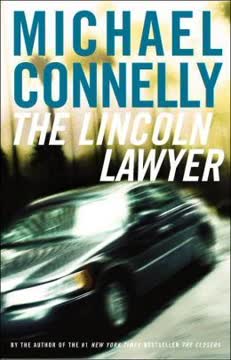

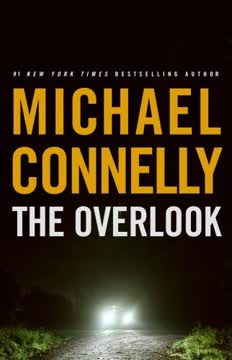
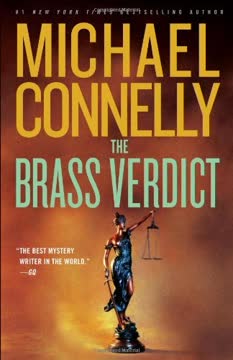
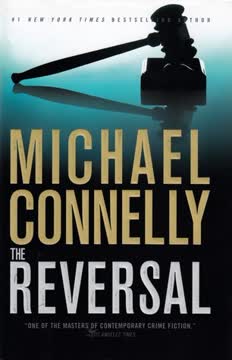

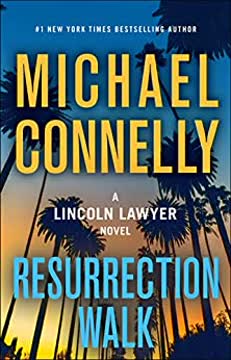

Similar Books
Download PDF
Download EPUB
.epub digital book format is ideal for reading ebooks on phones, tablets, and e-readers.


